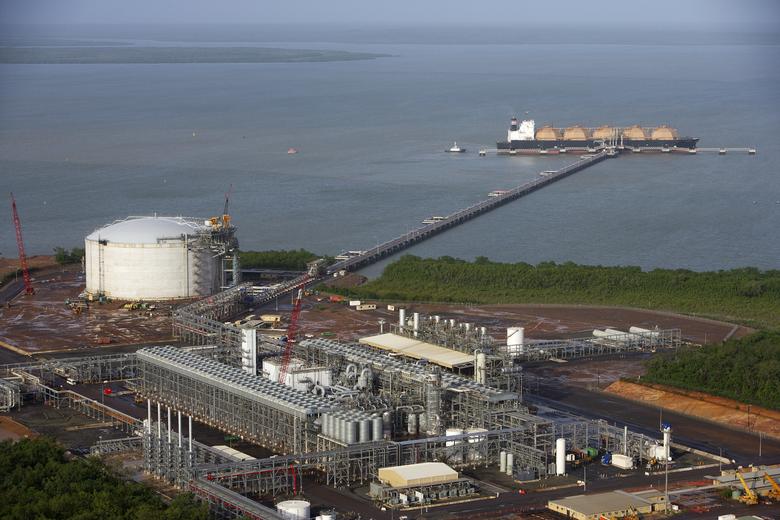
MAJORS WANT MORE

Total SA, Woodside Petroleum Ltd. and others want to invest more in downstream activities like regasification terminals, pipelines and power plants to boost demand in an oversupplied liquefied natural gas market. The vertically integrated model is what Rockefeller used for crude oil to make Standard Oil Co. the largest U.S. energy company in the early 20th century.
The push downstream underscores how desperate LNG producers are to lure new buyers to sop up excess supply that has depressed prices more than 70 percent the past 18 months. The supply glut isn't going away any time soon as production projects started years ago when prices were higher come online over the next few years.
"In 2015, Total was the most resilient major company thanks to our fully integrated model," Patrick Pouyanne, the French energy giant's chief executive officer, said during a press conference Wednesday at the LNG 18 conference in Perth. "In gas we are aiming for the same business model, to be not only producing gas and transforming it into LNG, but also going down to the market and delivering and going step by step down the value chain."
Power Plants
Total has invested in regasification terminals and is exploring a project in Indonesia where it could invest in gas pipelines and even an independent power plant, Pouyanne said.
Cheniere Energy Inc., the first exporter of U.S. shale gas as LNG, is working with a consortium of companies to develop an LNG-fueled power project in Chile, Meg Gentle, the company's president of marketing, said in an interview. As part of the plan, Cheniere would own 50 percent of a regasification ship and 10 percent of natural gas pipelines and a power plant.
"Our goal is to sell LNG," she said. "We're happy to help local developers by investing in infrastructure if it helps the market grow."
Royal Dutch Shell Plc is trying to convert some traditional oil demand into LNG consumption, according to Maarten Wetselaar, the company's director of integrated gas. Shipping and trucking demand equates to about 700 million tons a year of LNG demand, nearly triple all the LNG sold last year, he said.
Import Terminals
Oil companies have long been integrated with operations that extract crude from the ground, pipe it, refine it into fuel and sell it to drivers at service stations. The model dates back to Rockefeller's Standard Oil, which was broken up by the U.S. government in 1911.
Australia's Woodside Petroleum is considering investing in LNG regasification terminals in Asia and taking stakes in power plants, Chief Executive Officer Peter Coleman told reporters in Perth.
"That volume needs to be able to go somewhere, so companies are going to have to look to create new markets to be able to assist in getting new outlets," said Coleman. "We can't wait and say, 'We've got gas, come and see us.'"
-----
More:
YAMAL LNG CREDIT LINE: EUR 3.6 BLN





